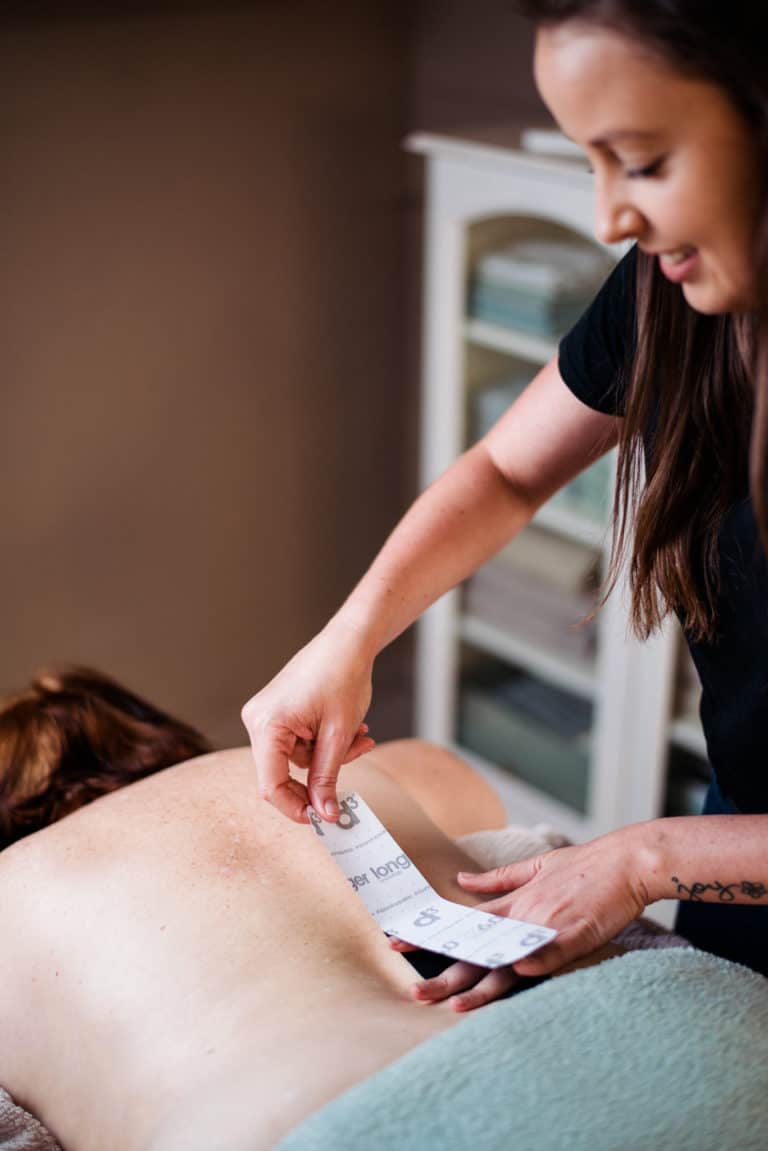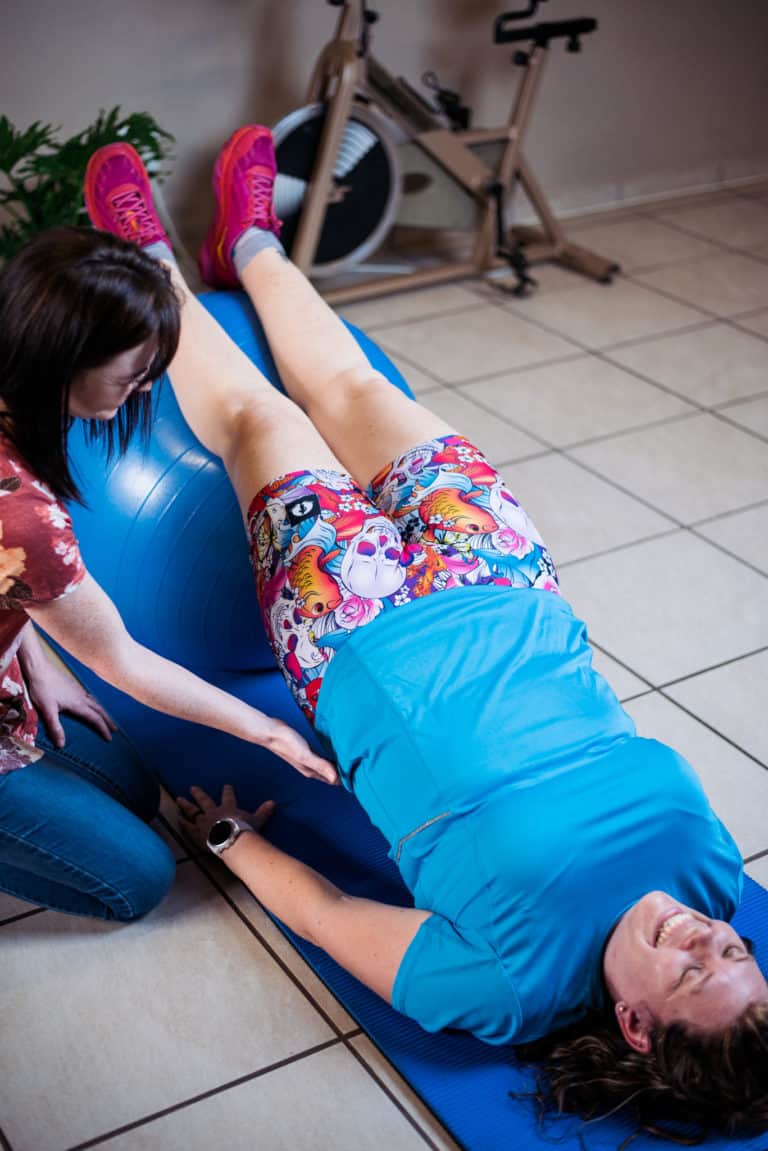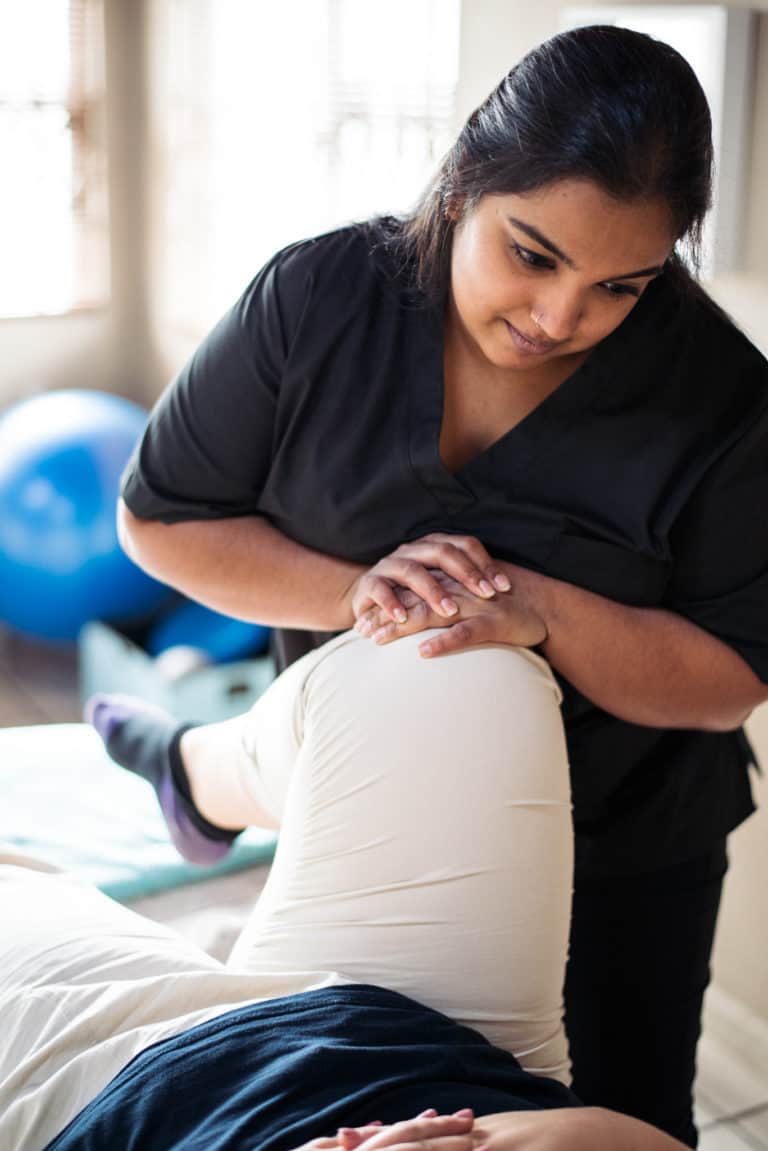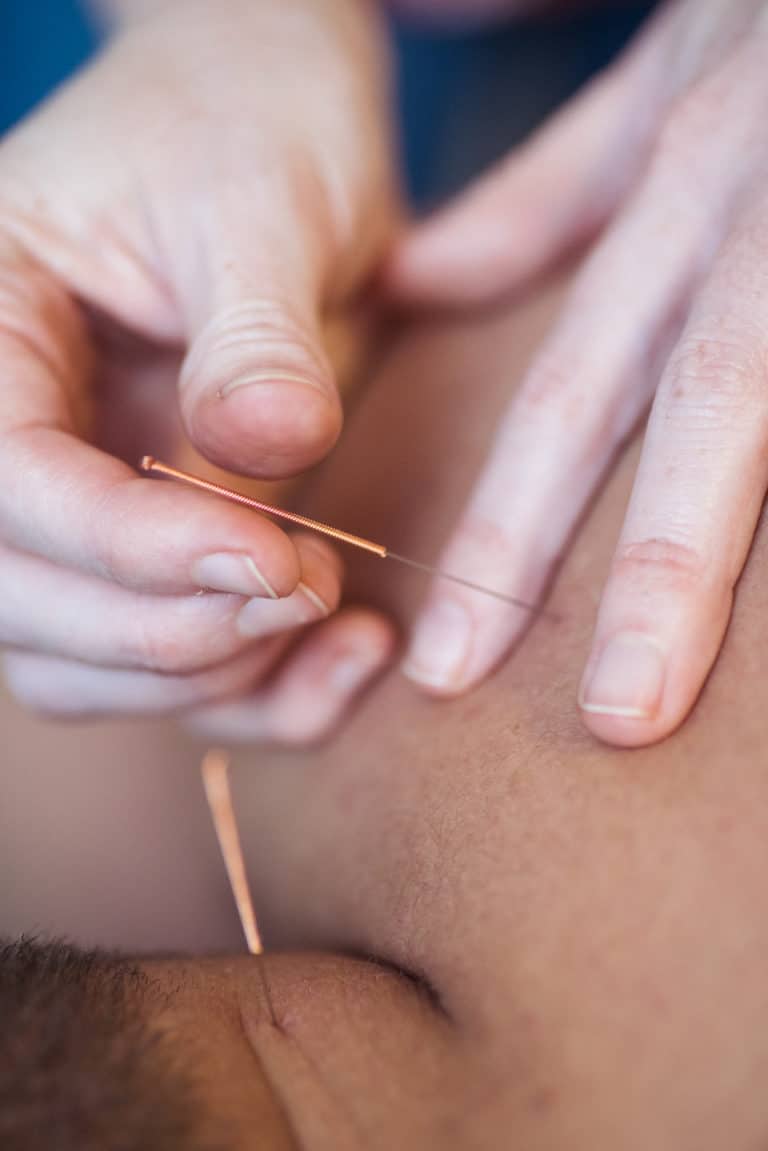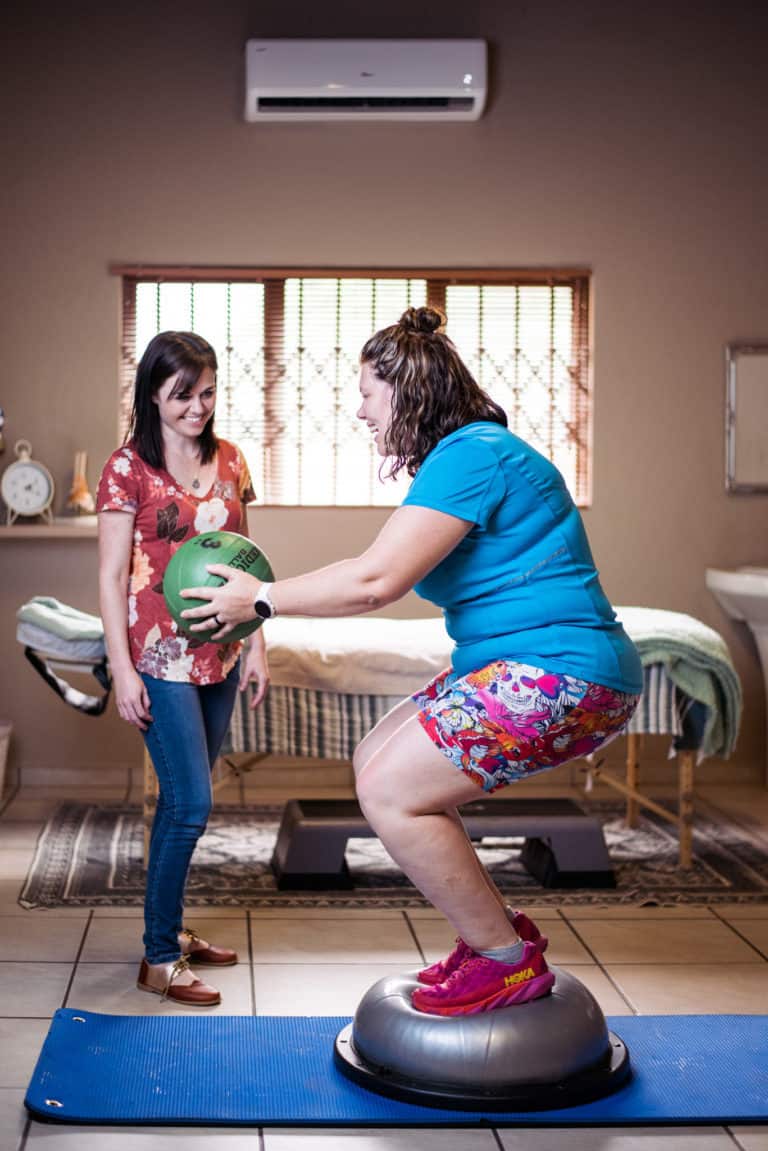As physiotherapists we are trained to use a number of different techniques and modalities to treat our patients. We are a very hands on physiotherapy practice- this means while we do have electrotherapy modalities to our disposal we typically use myofacial release, exercise prescription and joint mobilisations more frequently.
Soft tissue techniques can alter muscle fibres, tendon and ligament fibre orientation and connective tissue tensile strength.
Kinesio Tape is a rehabilitative taping technique that is designed to facilitate the body’s natural healing process while providing support and stability to muscles and joints without restricting the body’s range of motion. This tape is used to aid in the rehabilitation of a muscle/joint, pain management and to manage swelling or edema.
Individual Exercise and Rehabilitation Programmes. An exercise or a rehabilitation programme is administered to each patient to meet his or her individual needs. This may be to manage an injury, acute or chronic pain, stress, chest conditions or a sports-related injury.
An EMG is a device used for evaluating and recording the electrical activity produced by skeletal muscles. This is used for the rehabilitation of muscle activation, strength and endurance during a rehabilitation program. This is more often used when treating our weak pelvic floor patients.
A dysfunction in the sensorimotor control of the neck may be present after a whiplash type injury or a period of prolonged pain in the neck. In other words, there is a dysfunction in the proprioception/balance of the neck that may lead to further neck pain and dizziness. There are specific rehabilitation exercises such as strengthening of deep neck stabilisers and retraining the balance/proprioception of the neck to restore normal sensorimotor control of the neck.
All joints in the body have been designed to move in a certain way for optimal functioning of the body as a whole. When a person experiences pain, discomfort or has decreased mobility in their joints, caused by many different factors including an autoimmune disease, immobility, pain or injury, it is necessary to retrain and move the joints in the correct pattern again. A Physiotherapist is highly qualified to be able to regain movement in joints and retrain correct movement patterns with the use of joint-specific mobilisations or manipulations. This can increase range of movement of the joint, decrease pain and improve the patient’s quality of life.
Soft tissue techniques can alter muscle fibres, tendon and ligament fibre orientation and connective tissue tensile strength.
Myofascial release specifically targets the muscle fibres, releasing taut bands, muscle spasms and stretching stiff muscles.
Massage is a superficial technique used to relax muscles in tension and prevent severe DOMS (Delayed Onset of Muscle Soreness).
Cross Frictions is a deep technique most commonly performed on muscle tendons close to the musculo-tendinous junction to correct the fibre alignment and break down any thickenings or adhesions in the tendon.
Dry Needling involves insertion of a filament needle into the muscle in the region of a trigger point/muscle spasm. The aim of Dry Needling is to achieve a local twitch response to release muscle tension and pain.
Therapeutic ultrasound is applied using the head of an ultrasound probe applied directly to the skin with a gel between the skin and the probe for transmission of the ultrasound waves.
Therapeutic ultrasound has been shown to :
- increase rate of tissue healing
- increase tissue relaxation
- decrease inflammation
- breakdown scar tissue adhesions
TENS is an abbreviation of Transcutaneous Electrical Nerve Stimulation.
Pain is thought to be controlled by TENS in one of two ways:
Sensory Level Stimulation – The Gate Control theory of pain means that the electrical input of the TENS machine interferes with the transmission of pain signals, by blocking the neural “gate” through which the pain travels.
Motor Level Stimulation – The goal of motor level stimulation is to cause the release of the body’s own opiate-like substances to achieve pain relief.
TENS is typically used in the treatment of pain, both long term and short term. TENS can be a nice tool when treating persistent pain as it can help manage the pain during flare ups at home and it can help manage pain during rehabilitation.
The aims of rigid strapping tape include:
- injury prevention.
- joint stabilisation.
- joint and ligament protection.
Rigid Strapping Tape is recommended where an extra strong tape is necessary to support joints under extra-high stress.
It is often used to help manage a sports injury during training or a match. But it can also be used to help decrease pain and improve function by stabilising a joint during rehabilitation.
